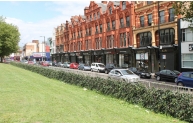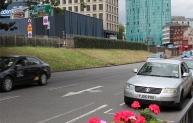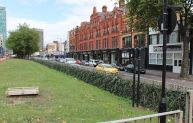- air jordan 5 island green releasing in november (2023) , SBD , air jordan 5 island green releasing in november
- 104 - Air Jordan 4 Laser Black kaufen kannst - Jordan Legacy 312 Storm Blue - AQ4160
- Nike Jordan Jumpman hoodie in grey - release dates & sneakers., Jordans - Yeezys, Urlfreeze News
- NikeCourt Air Zoom GP Turbo CK7513 - 101 Release Date - SBD - 101 CK7580 - nike hyperdunk olympic white gold black hair
- nike air jordan 1 low outlet
- best nike basketball shoes
- air jordan 4 white tech grey black fire red ct8527 100 release date
- Travis Scott Air Jordan 1 High OG CD4487 100 Release Date Price
- Air Jordan 1 Satin Black Toe CD0461 016 2019 Release Date 4
- air jordan 1 retro high og university blue 555088 134
- Home
- News and analysis
- Info hubs
- Events
- Video
- Case Studies
- About us
- Magazine
- Advertising
Produced for the industry by the Association for Consultancy and Engineering
Analysis
How to cut air pollution the green fingered way
Something a simple as growing foliage on street railings can take poisonous particles from the air and add to our well being too, says Chris Rance.

‘Pollution busting walls of green’ was the first line of a news item in the Birmingham Post in May this year. This followed two weeks after our trial installation of 140m of green vegetated screens attached to the existing guardrail along a major city centre road – the A38 Bristol Street. Well yes to a certain extent ‘pollution busting’ is an important aspect of this project but not the whole story.
"The researchers found that the quantity of particulate interception by the Bristol Street green screens may be of the order of 145 million particles per square metre a day, with each leaf removing perhaps three-quarters of a million particles per day."
Birmingham like many UK cities has a dense inner core – whilst the relatively low density surrounding suburbs are well provided with spacious parks and tree lined streets, the city centre is decidedly red-brick and concrete grey with limited opportunities for green space and associated vegetation. Short of removing urban blocks or waiting for redevelopment to introduce new areas of green space, some creative thinking is needed.
This set me thinking about vertical vegetation systems (green walls, living walls, green screens and vegetation covered buildings). These are widely considered to have multiple benefits in urban areas particularly where the density of built development leaves little room for conventional green space.
These benefits range from their aesthetic appearance as a landscape feature, to biodiversity, and air pollution filtering. In relation to air quality effects, recent research by a number of universities including Birmingham, Lancaster and Staffordshire suggests that the role of vertical vegetation systems can be much more significant than previously thought in removing airborne particulates.
Poor air quality is currently a pressing matter for most large UK cities. Last year nine English towns and cities were named by the World Health Organisation (WHO) for breaching safety guidelines for air pollution. These are London, Birmingham, Southampton, Sheffield, Leeds, Chesterfield, Nottingham, Stoke-on-Trent and Thurrock.
This article first appeared on Atkins Angles - read more http://angles.atkinsglobal.com
The main cause of this pollution in the UK is considered to be motor vehicles. The WHO sets a safe annual average level for airborne particulates (PMs) and its latest data shows these towns and cities breached the limit set for particles known as PM10 (particles less than 10 micrometres in diameter). The European Union sets PM10 levels at 40µg/m3 on average over a year, while the WHO guidelines put this lower, at 20µg/m3.
Another WHO study published in April estimated that the economic cost of premature deaths and health problems caused by air pollution is US$1.6 trillion per year in Europe (an estimated 600,000 premature deaths per year in Europe due to air pollution with the equivalent figure for the UK being about 29,000 per year). Also in April a UK Supreme Court ruling set out a requirement for the UK government to take immediate action to cut air pollution.
Atkins has already been involved in the design of the large new living wall at Birmingham New Street Station which officially opens next month. This wall is 76m long and with an average height of 4m it consists of over 33,000 plants planted into the face of the wall. This is very successful and well suited to a prestigious project with a budget to match.
However for wider application a much lower cost alternative is needed. At the other end of the cost spectrum to the living wall is the green screen which utilises climbing plants on wire or mesh.
"The visual transformation when the screens were installed was instant, with the look of the area and setting for the street and local businesses much improved – a couple of visitors were even seen posing for photographs with the newly installed screens in the background."
Our trial installation on Bristol Street, Birmingham is testing out the simple but novel idea of fitting green vegetated screens made up of mesh panels with pre-grown climbing plants to the existing guardrailing, which acts as a ready-made support structure.
Since the 1940s, pedestrian guardrailing has been installed in multiple locations along highways including many urban and town/city centre locations throughout the UK. Its purpose is to separate traffic from pedestrians. It is generally considered to be aesthetically unattractive and there have been moves for its removal as part of decluttering of the streetscape in parts of some towns and cities. However it continues to be installed along new highways and on existing ones where there are safety issues of protecting pedestrians from traffic.
The idea of trialling the green screens fits well with a streets enhancement initiative of one of the city centre business improvement districts (BID) in Birmingham. The board of the Southside BID has been very supportive of the idea, to the extent that the BID has funded the trial.
Since installation, researchers at Staffordshire University have been monitoring the amount of particulate matter intercepted by the green screens. Using samples collected from foliage they examined them using an environmental scanning electron microscope.
The results are unambiguous and demonstrate that the screens can reasonably said to be capturing particulates from the air and improving local air quality. In fact the researchers found that the quantity of particulate interception by the Bristol Street green screens may be of the order of 145 million particles per square metre a day, with each leaf removing perhaps three-quarters of a million particles per day.
However as I have said ‘pollution busting’ is an important benefit but only part of the story.
The visual transformation when the screens were installed was instant, with the look of the area and setting for the street and local businesses much improved – a couple of visitors were even seen posing for photographs with the newly installed screens in the background. As well as the visual aesthetic, a number of recent academic studies have shown a positive link between urban greenery and aspects of wellbeing including psychological and mental health benefits. This is not to mention the potential biodiversity opportunities.
If the humble pedestrian guardrail can be turned into a green wall, what other urban elements can be transformed or repurposed to help retrofit cities to twenty first century requirements? We hope to work further with the Southside BID to use the area as a test bed for other novel ideas in city greening.
Chris Rance helps to lead Atkins landscape and urban design team in Birmingham.








